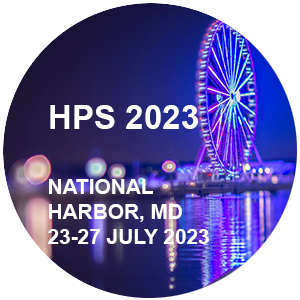News Archive
Mike Mahathy, Continuing Education Programs Committee Chair
 The Continuing Education Programs Committee has arranged for a variety of Professional Enrichment Program (PEP) courses for the 68th HPS Annual Meeting being held in July in National Harbor. PEP topics range from medical health physics to nuclear forensics.
The Continuing Education Programs Committee has arranged for a variety of Professional Enrichment Program (PEP) courses for the 68th HPS Annual Meeting being held in July in National Harbor. PEP topics range from medical health physics to nuclear forensics.
In this article we highlight two courses: Characteristic Limits in Bioassay and Laser Safety for the Health Physicist.
The abstract for Characteristic Limits in Bioassay (LaBone), 23 July, 3:30–6:30 pm, states:
Characteristic limits are the general term for what we in health physics refer to as the detection level (DL), minimum detectable amount (MDA), and minimum quantifiable value (MQV). The DL and MDA are concerned with our ability to detect an analyte in a sample, whereas the MQV is concerned with our ability to quantify an analyte rather than just detect it. In the first part of this lecture, we will discuss how to calculate the a priori DL, MDA, and MQV for an analytical process. This discussion is somewhat atypical because it is presented in terms of the reported result (e.g., mBq/L) rather than the signal (e.g., number of counts in the sample and background) and the use of replicate measurements is covered. In the second part of the lecture, the a posteriori DL, which is used to make decisions about detection for a particular analysis, will be derived using the combined standard uncertainty (CSU) for the analysis that is reported by the analytical laboratory and coverage intervals constructed from this CSU. As we shall see, this approach offers many benefits.
The abstract for Laser Safety for the Health Physicist (Gibbons), 23 July, 10:30 am–12:30 pm, states:
State and federal agencies comprehensively regulate ionizing radiation through licensing, policies, and consensus standards, and licensees are frequently visited by inspectors from regulatory agencies. Nonionizing radiation requirements, on the other end of the spectrum, may be as simple as registering devices with state agencies. As time progresses, lasers are becoming more powerful and with that the associated hazards continue to increase. In many academic and research institutions, the responsibility for laser safety may be placed on existing health physics staff who may not be comfortable carrying out the duties of laser safety officers. Awareness of the hazards associated with lasers and more intimate knowledge of the subject will provide a stronger foundation on which to build a laser safety program. This discussion will engage the audience and introduce key topics to those newly tasked with or interested in laser safety duties while offering those more experienced an opportunity to review the fundamentals and share personal insights. Topics covered will include a brief review of laser safety terminology, aspects of successful laser safety programs, an overview of the Z136 laser safety standards, example laser safety calculations, and discussions on lessons learned.
Check out all PEP courses on the meeting website and register to reserve your spot. All the courses will be good.



